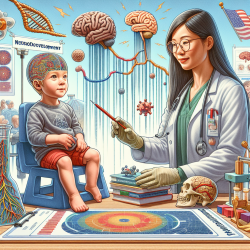Unlock the Secrets of Autism: What This Groundbreaking Study Reveals
The quest to understand Autism Spectrum Disorder (ASD) has taken a significant leap forward with a recent study titled "Cellular and molecular characterization of multiplex autism in human induced pluripotent stem cell-derived neurons." This research provides a fresh perspective on ASD, focusing on the cellular and molecular underpinnings of the disorder.
The Study at a Glance
The study utilized induced pluripotent stem cells (iPSCs) derived from individuals within a multiplex autism family, which means that multiple family members are affected by ASD. The researchers differentiated these iPSCs into two types of neurons: cortical excitatory neurons (cExN) and cortical inhibitory neurons (cIN). By analyzing these neurons, they uncovered distinct cellular and molecular signatures associated with ASD.
Key Findings
- Neurosphere Size Reduction: The study found that neurospheres from affected individuals were significantly smaller than those from unaffected individuals. This was attributed to increased apoptosis during neural induction.
- Transcriptomic Analysis: Distinct molecular signatures were identified, revealing misregulation of genes associated with neural development and ASD risk.
- Polygenic Liability: The research highlighted the role of polygenic liability in ASD, suggesting that multiple genetic factors contribute to the disorder.
Implications for Practitioners
For practitioners, these findings emphasize the importance of considering genetic factors when developing therapeutic strategies for children with ASD. The study's insights into the cellular and molecular mechanisms of ASD could inform the development of targeted therapies that address the specific genetic and cellular abnormalities present in affected individuals.
Encouraging Further Research
This study opens the door to further research into the cellular and molecular aspects of ASD. By exploring the genetic and cellular basis of the disorder, researchers can develop more effective interventions that improve outcomes for children with ASD. Practitioners are encouraged to stay informed about the latest research developments and consider how these findings can be integrated into their practice.
Conclusion
The study "Cellular and molecular characterization of multiplex autism in human induced pluripotent stem cell-derived neurons" provides valuable insights into the genetic and cellular mechanisms of ASD. By leveraging these findings, practitioners can enhance their therapeutic approaches and contribute to better outcomes for children with ASD.
To read the original research paper, please follow this link: Cellular and molecular characterization of multiplex autism in human induced pluripotent stem cell-derived neurons.










